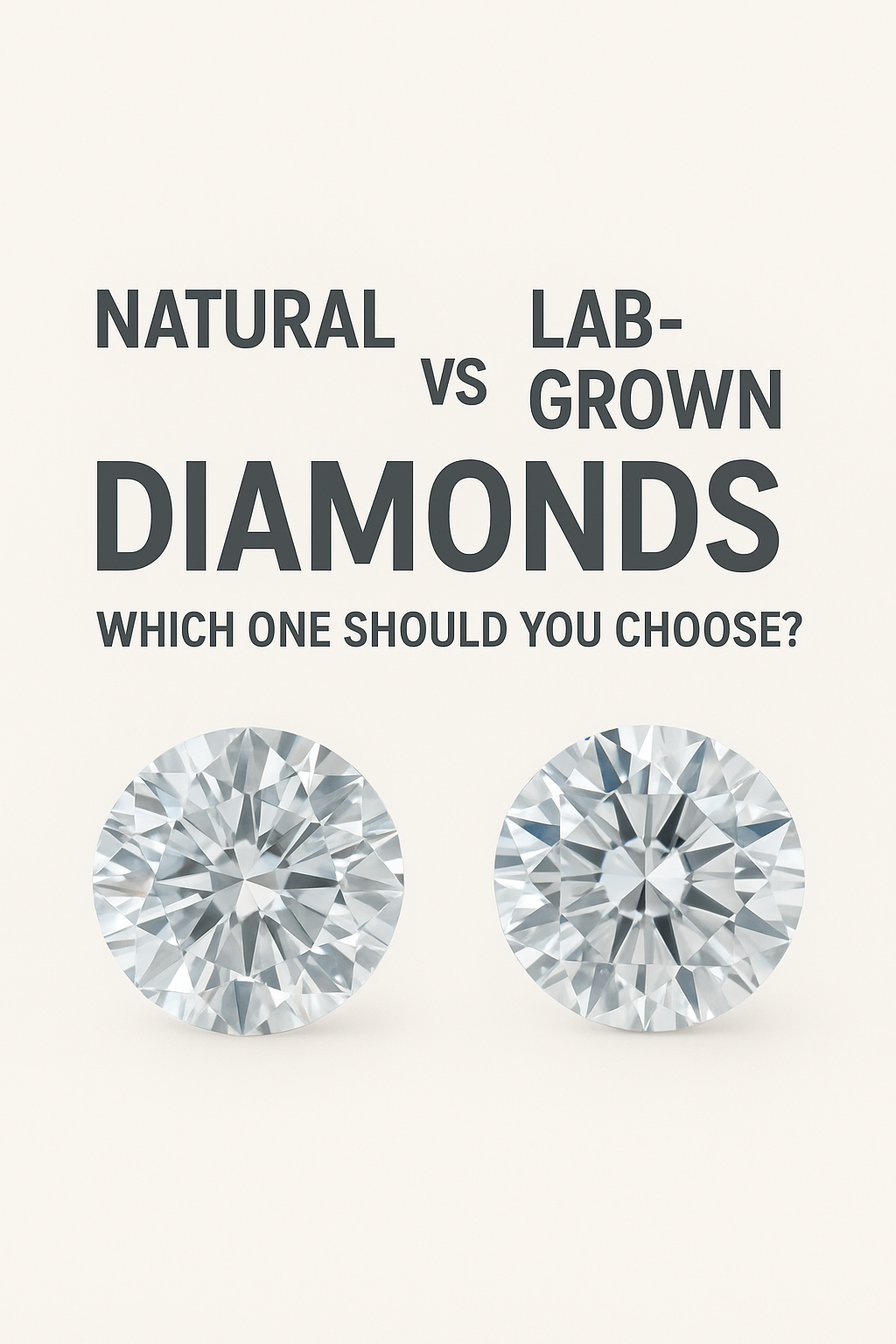Diamonds are timeless symbols of love, purity, and luxury — but today, buyers have a choice to make: Natural vs Lab-Grown Diamonds.
Both look identical to the naked eye and share the same chemical composition, yet their origins, cost, and emotional value differ significantly. So how do you decide which one is right for you?
Let’s break down the truth behind natural and lab-grown diamonds — with expert insights from GemLabTesting.com, India’s trusted gem and diamond testing laboratory.
Table of Contents
1. What Are Natural Diamonds?
Natural diamonds are formed deep beneath the Earth’s surface, about 100–150 km underground, under extreme pressure and heat over billions of years.
They are mined from the earth and then cut, polished, and certified before reaching the market.
Key Traits of Natural Diamonds:
- Created naturally over millions of years
- Contain minor inclusions or natural imperfections
- Rarer and often hold higher resale or emotional value
- Certified by recognized gem labs (GIA, IGI, GSI, GemLabTesting.com)
In short: Each natural diamond is a unique creation of nature — no two are exactly alike.

2. What Are Lab-Grown Diamonds?
Lab-grown diamonds are man-made diamonds created using advanced technology that replicates natural diamond-forming conditions.
They are chemically, physically, and optically identical to natural diamonds — the only difference is how they’re formed.
Two Common Methods:
- HPHT (High Pressure High Temperature): Mimics the earth’s heat and pressure environment.
- CVD (Chemical Vapor Deposition): Grows diamonds atom by atom in a controlled chamber.
Key Traits of Lab-Grown Diamonds:
- Created in laboratories within weeks
- Cost 30–50% less than natural diamonds
- Environmentally sustainable (no mining)
- Often have fewer inclusions and perfect clarity
3. Key Differences: Natural vs Lab-Grown Diamonds
| Feature | Natural Diamonds | Lab-Grown Diamonds |
|---|---|---|
| Origin | Formed naturally in Earth | Created in a laboratory |
| Formation Time | Millions of years | Few weeks |
| Price | Higher | 30–50% cheaper |
| Purity | May contain natural inclusions | Often cleaner, fewer flaws |
| Resale Value | Higher, collectible | Lower resale value |
| Environmental Impact | Mining involved | Eco-friendly and sustainable |
| Certification | GIA, IGI, GSI, GemLabTesting.com | IGI, GSI, GemLabTesting.com |
4. Visual & Physical Comparison
To the naked eye, both diamonds are indistinguishable. Even expert jewelers cannot always tell the difference without specialized instruments.
However, gem testing labs can detect lab-grown diamonds through advanced equipment like:
- UV Fluorescence Test
- Spectroscopic Analysis
- DiamondView and Phosphorescence Imaging
These tests reveal unique growth patterns and trace elements that confirm the diamond’s origin.
5. Which One Should You Choose?
💎 Choose a Natural Diamond If:
- You value heritage, rarity, and emotional significance
- You want a diamond with higher resale or investment value
- You prefer nature-created gems with unique character
💠 Choose a Lab-Grown Diamond If:
- You want a budget-friendly option without compromising beauty
- You prefer eco-conscious and ethical choices
- You seek perfect clarity for everyday wear
In both cases, authenticity matters — always ensure your diamond is certified and tested by a trusted gem lab.
6. How GemLabTesting.com Detects Lab-Grown Diamonds
At GemLabTesting.com, our expert gemologists use state-of-the-art instruments to distinguish between natural and lab-grown diamonds.
Our Testing Methods Include:
- UV-Visible Spectroscopy: Detects unique absorption patterns
- Photoluminescence Analysis: Identifies nitrogen or boron traces
- Laser Testing: Determines growth structure and inclusions
- High-Magnification Microscopy: Studies internal crystal patterns
Each report clearly mentions whether the diamond is Natural or Lab-Grown, along with detailed grading on the 4C’s — Cut, Color, Clarity, and Carat.
7. Certification and Transparency
Both types of diamonds — natural and lab-grown — should come with a certificate of authenticity from a trusted gem lab.
GemLabTesting.com issues a professional diamond report that includes:
- Origin identification (Natural / Lab-Grown)
- 4C grading
- Fluorescence and inclusion details
- Photographic evidence and report number
This ensures buyers get complete transparency and peace of mind with every purchase.
8. The Final Verdict
There’s no “better” diamond — only the right choice for your preference and purpose.
- Natural diamonds represent tradition, rarity, and emotional depth.
- Lab-grown diamonds symbolize modern innovation, sustainability, and affordability.
Whichever you choose, make sure it’s authentic, certified, and tested by professionals.
Conclusion
Diamonds — whether born from the Earth or a lab — are symbols of everlasting beauty. What truly matters is transparency, quality, and trust.
At GemLabTesting.com, we combine cutting-edge technology with expert gemologists to deliver accurate diamond testing and certification you can rely on.
✨ Your diamond deserves the truth — let us help you find it.